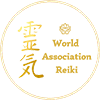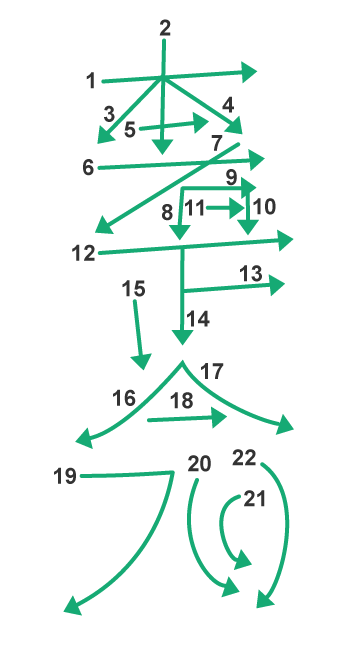The Hon Sha Ze Sho Nen (HSZSN) is the third Reiki symbol, learned at Okuden, level 2. This symbol was typically thought of as the symbol of distance but its use goes far beyond that, and is used to transcend time. and the space with its translation being “having no past, present or future”.
The Cho Ku Rei symbol is used first to activate the Hon Sha Ze Sho Nen.
(Note: although Hon Sha Ze Sho Nen is spoken, the kanji Sho is written before Ze).
The HSZSN gives the REIKI practitioner the ability to channel REIKI over short or long distances.
The HSZSN also allows the practitioner to time travel from the present, the past or the future. REIKI can be used to balance issues from years gone by and even work with karmic or past life issues.
Future situations such as medical interventions, interviews or important events can be balanced by performing REIKI before they occur. In some cases, an individual’s body is not ready to balance itself at the present time but there may be a time in the future when it feels safe to be healed and when the balanced state will hold.
For example , a woman who acts in an abusive way :
In this situation she may not feel ready to be healed until she feels able to successfully release the relationship.
The HSZSN symbol could be drawn on the body and allow REIKI to act only at a certain time, with the result that the woman will experience the effects of balance in the future.
We don’t know why Master Usui chose a combination of Kanji to create Hon Sha Ze Sho Nen 本者是正念 as a symbol for distance and mental healing.
However, unlike Western calligraphy, Chinese/Japanese is a script inspired by Heaven, by the Kami, therefore it is sacred.
When we see a master calligrapher in his art, he raises his brush first to the sky, as if bringing the energy of a kami into his work.
He too must be full of ki and in balance, as the energy will be reflected in his art…an interesting lesson for a REIKI practitioner.
Meaning of Hon Sha Ze Sho Nen
Over time, we have had several interpretations of this set of kanji, from «no past, no present, no future» to a more correct and contemporary interpretation that says
«Right thinking is the essence of Being» or «This (Hon) person (Sha) justly (Ze) corrects/adjusts (Sho) thoughts/feelings (Nen)».
About the said name of the symbol, there are those who call it a kotodama or those who call it a jumon. Kotodama can mean the word soul and jumon is an incantation, typical of esoteric Buddhism.


